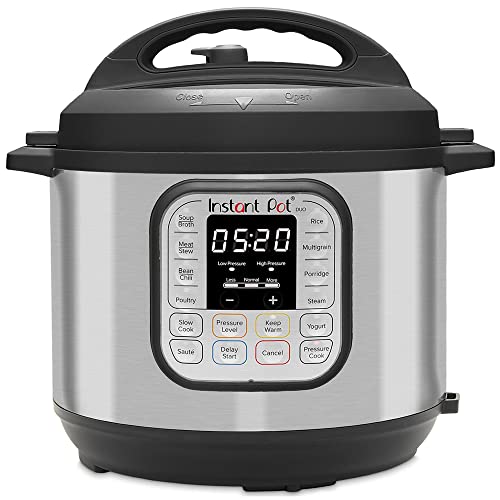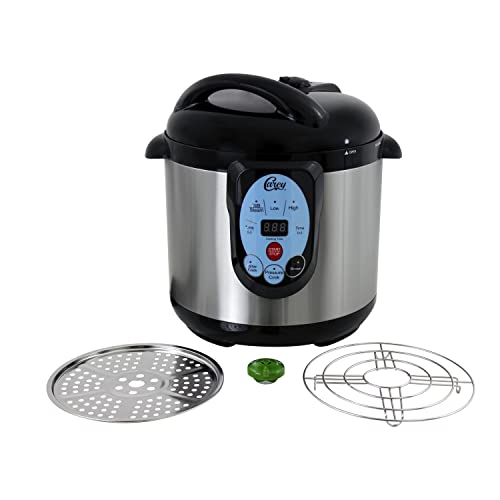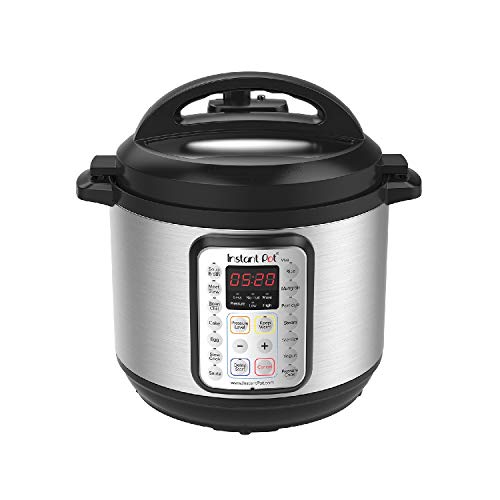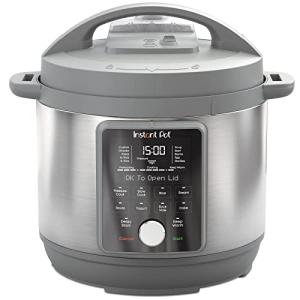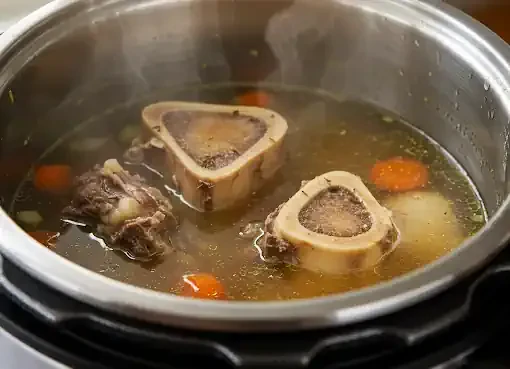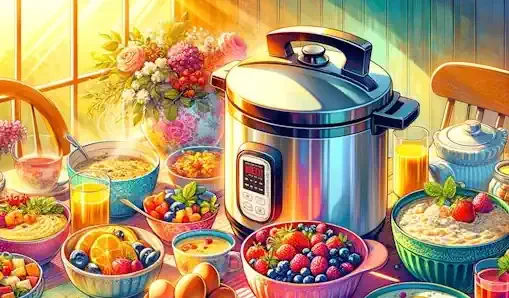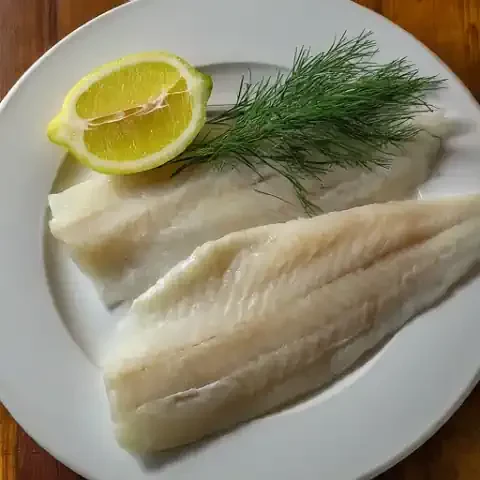Introduction
In today's fast-paced world, efficiency and convenience are paramount in the kitchen. One culinary tool that has risen to prominence in recent years is the pressure cooker. These versatile appliances have revolutionized the way we cook, offering a myriad of benefits that appeal to busy households and culinary enthusiasts alike.
Brief Overview of Pressure Cookers
Pressure cookers utilize the power of steam and high pressure to drastically reduce cooking times while locking in flavor and nutrients. Originally developed in the 17th century, pressure cookers have undergone significant advancements in design and functionality, making them safer and more user-friendly than ever before.
Growing Popularity of Pressure Cookers in Modern Kitchens
In recent years, pressure cookers have experienced a resurgence in popularity, fueled by a renewed interest in home cooking and a desire for efficient meal preparation. Their ability to tenderize tough cuts of meat, cook grains to perfection in a fraction of the time, and produce rich, flavorful stews and soups has earned them a coveted spot in kitchens around the world.
Purpose of the Article
In this article, we delve into the myriad benefits and techniques of cooking with pressure cookers. From saving time and energy to preserving nutrients and intensifying flavors, pressure cookers offer a multitude of advantages that can transform the way you approach meal preparation. Whether you're a seasoned chef or a novice cook, exploring the world of pressure cooking can unlock a whole new realm of culinary possibilities. Join us as we uncover the secrets to successful pressure cooking and discover how this innovative kitchen appliance can revolutionize your cooking experience.
Understanding Pressure Cooking
Pressure cooking is a cooking technique that utilizes steam and high pressure to cook food quickly and efficiently. This section aims to provide a comprehensive understanding of pressure cooking, including how pressure cookers work, the scientific principles behind pressure cooking, and the various types of pressure cookers available in the market.
Explanation of How Pressure Cookers Work
At its core, a pressure cooker consists of a sealed pot with a valve that controls the internal pressure. When heat is applied to the pot, the liquid inside generates steam, increasing the pressure within the cooker. This elevated pressure raises the boiling point of water, allowing food to cook at higher temperatures than conventional methods. As a result, cooking times are significantly reduced, making pressure cookers an invaluable tool for busy kitchens.
Science Behind Pressure Cooking: Principles of Pressure and Temperature
The science behind pressure cooking revolves around the principles of pressure and temperature. As the pressure inside the cooker increases, so does the boiling point of water. This means that food cooks at higher temperatures, which speeds up the cooking process. Additionally, the high pressure forces moisture into the food, resulting in tender, succulent dishes. Understanding these scientific principles is key to mastering the art of pressure cooking and achieving optimal results.
Types of Pressure Cookers Available in the Market
Pressure cookers come in various shapes, sizes, and designs to suit different cooking needs and preferences. Traditional stovetop pressure cookers are heated on the stovetop and require manual monitoring of pressure levels. Electric pressure cookers, on the other hand, are standalone appliances that regulate pressure and temperature automatically, offering greater convenience and ease of use. Additionally, there are specialized pressure cookers such as multi-cookers, which combine pressure cooking with other functions like slow cooking and steaming. By understanding the different types of pressure cookers available, cooks can choose the model that best fits their cooking style and requirements.
Understanding the mechanics and principles behind pressure cooking is essential for harnessing the full potential of this versatile cooking technique. Whether you opt for a traditional stovetop cooker or a modern electric model, mastering the art of pressure cooking can revolutionize your culinary repertoire and streamline meal preparation in your kitchen.
Benefits of Cooking with Pressure Cookers
Pressure cookers offer a multitude of advantages that make them indispensable tools in the modern kitchen. This section explores the various benefits of cooking with pressure cookers, ranging from time-saving advantages to flavor enhancement and versatility.
Time-saving Advantages: Significantly Reduced Cooking Time
One of the most significant benefits of pressure cooking is its ability to drastically reduce cooking times compared to conventional methods. By cooking food under high pressure and temperature, pressure cookers can tenderize tough cuts of meat and cook grains in a fraction of the time it would take with traditional cooking methods. This time-saving advantage makes pressure cookers ideal for busy households and allows cooks to prepare delicious, home-cooked meals in a fraction of the time.
Energy Efficiency: Lower Energy Consumption Compared to Traditional Cooking Methods
Pressure cookers are not only time-saving but also energy-efficient. Because they cook food quickly and at higher temperatures, pressure cookers require less energy than conventional cooking methods such as boiling, steaming, or baking. This translates to lower utility bills and reduced environmental impact, making pressure cookers a sustainable choice for eco-conscious cooks.
Preservation of Nutrients: Minimal Loss of Vitamins and Minerals Due to Shorter Cooking Duration
Unlike traditional cooking methods that may lead to nutrient loss through prolonged cooking times, pressure cooking helps preserve the nutritional integrity of food. The shorter cooking duration and minimal exposure to heat ensure that vitamins, minerals, and other nutrients are retained in the food, resulting in healthier, more nutritious meals.
Flavor Enhancement: Intensified Flavors and Tenderized Textures
Pressure cooking not only speeds up the cooking process but also enhances the flavors and textures of food. The high pressure and steam help break down tough fibers in meat, resulting in tender, succulent dishes. Additionally, the sealed environment of the pressure cooker allows flavors to intensify and meld together, resulting in rich, deeply flavorful meals that are sure to impress.
Versatility: Ability to Cook a Wide Range of Dishes, from Soups to Desserts
One of the most appealing aspects of pressure cookers is their versatility. From soups and stews to risottos, curries, and even desserts, pressure cookers can handle a wide range of dishes with ease. Whether you're craving a comforting bowl of homemade chili or a decadent cheesecake, the pressure cooker can deliver delicious results in a fraction of the time it would take with traditional cooking methods.
In summary, cooking with pressure cookers offers a host of benefits, including time-saving advantages, energy efficiency, preservation of nutrients, flavor enhancement, and versatility. By harnessing the power of steam and high pressure, pressure cookers can revolutionize your cooking experience and help you prepare delicious, nutritious meals with ease.
Essential Techniques for Pressure Cooking
To achieve optimal results when pressure cooking, it's essential to master certain techniques that ensure your dishes are cooked to perfection. This section outlines key techniques for successful pressure cooking, including preparing ingredients, maintaining the proper liquid ratio, operating the pressure cooker, and practicing safe handling practices.
Preparing Ingredients: Suitable Ingredients and Preparation Techniques
Not all ingredients are suitable for pressure cooking, so it's important to choose ingredients that can withstand high pressure and temperature without becoming mushy or losing their texture. Generally, tough cuts of meat, beans, grains, and root vegetables are excellent candidates for pressure cooking. Additionally, it's essential to prepare ingredients properly by trimming excess fat, chopping vegetables into uniform pieces, and seasoning meats and vegetables to enhance flavor.
Proper Liquid Ratio: Guidelines for Adding Liquids to Prevent Burning and Ensure Optimal Cooking Results
Maintaining the correct liquid ratio is crucial for successful pressure cooking. As a general rule, it's recommended to use at least one cup of liquid (water, broth, or cooking liquid) for every recipe to ensure there's enough steam to build pressure. However, for ingredients that release their own liquid during cooking, such as tomatoes or certain vegetables, you may need to adjust the liquid accordingly. Be cautious not to exceed the maximum fill line of your pressure cooker to prevent liquids from spilling out during cooking.
Operating the Pressure Cooker: Step-by-Step Guide on Using and Adjusting Pressure Levels
Operating a pressure cooker may seem intimidating at first, but with a little practice, it becomes second nature. Start by adding ingredients to the pot and securing the lid, ensuring that the sealing ring is properly in place. Next, select the desired cooking program or set the pressure level and cooking time manually, depending on your pressure cooker model. Once cooking begins, the pressure cooker will build up pressure, indicated by a hissing or whistling sound. Adjust the heat as needed to maintain the desired pressure level, and allow the cooker to depressurize naturally or use the quick release method, depending on the recipe's instructions.
Safe Handling Practices: Releasing Pressure and Opening the Cooker Safely
Safety is paramount when using a pressure cooker, so it's essential to follow proper handling practices to prevent accidents. When releasing pressure from the cooker, always use caution and follow the manufacturer's instructions. For quick release, carefully move the pressure release valve to the venting position using a long-handled utensil, ensuring your hands and face are away from the steam. For natural release, allow the pressure to dissipate gradually on its own before opening the cooker. Once the pressure has been released, carefully remove the lid, tilting it away from you to avoid being scalded by steam.
Mastering these essential techniques for pressure cooking will enable you to create delicious, perfectly cooked meals with confidence and ease. By preparing ingredients thoughtfully, maintaining the proper liquid ratio, operating the pressure cooker correctly, and practicing safe handling practices, you'll unlock the full potential of your pressure cooker and elevate your culinary creations to new heights.
Tips for Cooking Success
Cooking with a pressure cooker can be a rewarding experience, but mastering the art requires some knowledge and finesse. This section provides valuable tips to ensure your pressure cooking endeavors are successful and enjoyable.
Choosing the Right Recipes: Selecting Dishes Suitable for Pressure Cooking
Not all recipes are created equal when it comes to pressure cooking. To maximize your chances of success, choose recipes that are well-suited for this cooking method. Look for recipes that feature tough cuts of meat, dried beans, grains, and root vegetables, as these ingredients benefit most from the tenderizing effects of pressure cooking. Additionally, opt for recipes with shorter cooking times to fully leverage the time-saving advantages of pressure cooking.
Adjusting Cooking Times and Pressure Levels for Different Ingredients
Each ingredient has its own cooking requirements, so it's essential to adjust cooking times and pressure levels accordingly. For example, dense ingredients like whole potatoes or large cuts of meat may require longer cooking times at higher pressure levels, while delicate ingredients like fish or vegetables may require shorter cooking times at lower pressure levels. Experimentation and practice will help you develop a feel for the optimal cooking times and pressure settings for different ingredients.
Utilizing Flavor Enhancers: Spices, Herbs, and Aromatics for Added Taste
Pressure cooking not only speeds up the cooking process but also intensifies flavors. Take advantage of this by incorporating flavor enhancers such as spices, herbs, and aromatics into your recipes. Experiment with different combinations to create depth and complexity in your dishes. For example, add bay leaves, garlic, and thyme to a beef stew for a rich, aromatic flavor profile, or use cinnamon and cloves to spice up a batch of applesauce. Don't be afraid to get creative and tailor the flavors to suit your taste preferences.
Experimenting with Recipes: Adapting Traditional Recipes for Pressure Cooking
One of the joys of pressure cooking is the ability to adapt traditional recipes for this cooking method. Experiment with your favorite recipes, making adjustments as needed to accommodate the pressure cooker. For example, if a recipe calls for simmering on the stovetop for an hour, you can likely achieve similar results in a pressure cooker in a fraction of the time. Keep in mind that some modifications may be necessary, such as reducing the amount of liquid or adjusting seasoning levels to account for the shorter cooking time. With a little creativity and experimentation, you can breathe new life into old favorites and discover exciting new dishes to enjoy.
By following these tips for cooking success, you'll be well-equipped to harness the full potential of your pressure cooker and create delicious, flavorful meals with ease. Whether you're a novice cook or an experienced chef, pressure cooking offers endless possibilities for culinary exploration and enjoyment.
Popular Pressure Cooker Recipes
Pressure cookers are versatile appliances that can be used to prepare a wide range of delicious dishes in a fraction of the time it would take with conventional cooking methods. Here are some popular pressure cooker recipes that are sure to become favorites in your kitchen:
Quick and Easy Pressure Cooker Chili
Ingredients:
1 lb ground beef
1 onion, diced
2 cloves garlic, minced
1 bell pepper, diced
1 can (14 oz) diced tomatoes
1 can (14 oz) kidney beans, drained and rinsed
1 cup beef broth
2 tablespoons chili powder
1 teaspoon cumin
Salt and pepper to taste
Instructions:
Set the pressure cooker to sauté mode and brown the ground beef until no longer pink. Remove excess fat.
Add the diced onion, garlic, and bell pepper, and sauté until softened.
Add the diced tomatoes, kidney beans, beef broth, chili powder, cumin, salt, and pepper to the pressure cooker.
Close the lid and cook on high pressure for 10 minutes.
Once done, use the quick release method to release the pressure. Serve hot, garnished with your favorite toppings such as shredded cheese, sour cream, and chopped green onions.
Flavorful Chicken and Rice in a Pressure Cooker
Ingredients:
4 boneless, skinless chicken breasts
1 cup long-grain white rice
1 onion, diced
2 cloves garlic, minced
1 cup chicken broth
1 teaspoon paprika
Salt and pepper to taste
Instructions:
Season the chicken breasts with paprika, salt, and pepper.
Place the chicken breasts in the pressure cooker and add the diced onion, minced garlic, rice, and chicken broth.
Close the lid and cook on high pressure for 8 minutes.
Once done, allow the pressure to release naturally for 5 minutes, then use the quick release method to release any remaining pressure. Fluff the rice with a fork and serve hot.
Creamy Risotto Made Effortlessly in a Pressure Cooker
Ingredients:
1 ½ cups Arborio rice
4 cups chicken or vegetable broth
1 onion, finely chopped
2 cloves garlic, minced
½ cup dry white wine
½ cup grated Parmesan cheese
Salt and pepper to taste
Instructions:
Set the pressure cooker to sauté mode and sauté the chopped onion and minced garlic until translucent.
Add the Arborio rice and continue to sauté for another minute.
Pour in the white wine and cook until the liquid has evaporated.
Add the chicken or vegetable broth to the pressure cooker and stir to combine.
Close the lid and cook on high pressure for 6 minutes.
Once done, allow the pressure to release naturally for 10 minutes, then use the quick release method to release any remaining pressure.
Stir in the grated Parmesan cheese and season with salt and pepper to taste. Serve hot.
Dessert Delights: Making Decadent Cheesecake in a Pressure Cooker
Ingredients:
1 ½ cups graham cracker crumbs
¼ cup granulated sugar
½ cup unsalted butter, melted
16 oz cream cheese, softened
½ cup granulated sugar
2 eggs
½ cup sour cream
1 teaspoon vanilla extract
Instructions:
In a bowl, mix together the graham cracker crumbs, ¼ cup sugar, and melted butter until well combined. Press the mixture into the bottom of a greased springform pan to form the crust.
In a separate bowl, beat the softened cream cheese, ½ cup sugar, eggs, sour cream, and vanilla extract until smooth and creamy.
Pour the cream cheese mixture over the prepared crust in the springform pan.
Cover the springform pan tightly with aluminum foil.
Pour 1 cup of water into the pressure cooker and place the trivet inside. Carefully lower the springform pan onto the trivet.
Close the lid and cook on high pressure for 35 minutes.
Once done, allow the pressure to release naturally for 10 minutes, then use the quick release method to release any remaining pressure.
Remove the cheesecake from the pressure cooker and let it cool to room temperature before refrigerating for at least 4 hours or overnight.
Serve chilled, topped with your favorite fruit compote or whipped cream.
These popular pressure cooker recipes demonstrate the versatility and convenience of pressure cooking, allowing you to prepare delicious meals and desserts with ease. Experiment with different ingredients and flavor combinations to customize these recipes to your liking and discover new favorites to enjoy with family and friends.
Maintenance and Care of Pressure Cookers
Taking proper care of your pressure cooker is essential for ensuring its longevity and continued performance. This section provides valuable maintenance and care tips, including cleaning and storage recommendations, troubleshooting common issues, and safety precautions to prevent accidents.
Cleaning and Storage Tips for Prolonging the Lifespan of Pressure Cookers
After each use, clean the pressure cooker thoroughly with warm, soapy water and a soft sponge or cloth. Pay close attention to any food residue or stains, especially around the sealing ring and pressure release valve.
Remove the sealing ring and any other removable parts and wash them separately to ensure thorough cleaning.
Allow all parts of the pressure cooker to dry completely before reassembling and storing.
Store the pressure cooker in a cool, dry place away from direct sunlight and moisture to prevent rusting and damage.
Avoid stacking heavy items on top of the pressure cooker, as this can cause deformation or damage to the pot.
Troubleshooting Common Issues with Pressure Cookers
If the pressure cooker fails to pressurize properly, check the sealing ring and ensure it is properly seated and free from any damage or debris.
If the pressure cooker is leaking steam, check the pressure release valve and ensure it is closed tightly.
If the pressure cooker is not reaching the desired pressure level, check the sealing ring and pressure release valve for any blockages or obstructions.
If the pressure cooker is emitting a burning smell, check the contents of the pot and ensure they are not scorched or burnt. Adjust the cooking time and pressure levels as needed to prevent overcooking.
Safety Precautions: Avoiding Accidents and Ensuring Proper Functioning of the Cooker
Always read and follow the manufacturer's instructions carefully when using the pressure cooker.
Never overfill the pressure cooker beyond the maximum fill line, as this can cause liquids to spill out during cooking.
Always ensure the pressure release valve is closed tightly before pressurizing the cooker.
Never attempt to open the pressure cooker while it is pressurized. Always allow the pressure to release naturally or use the quick release method as directed.
Avoid using the pressure cooker for deep-frying or frying foods in oil, as this can be dangerous and increase the risk of accidents.
Regularly inspect the pressure cooker for signs of wear and tear, such as cracks or dents, and replace any damaged parts promptly.
By following these maintenance and care tips, troubleshooting common issues, and practicing safety precautions, you can prolong the lifespan of your pressure cooker, ensure its proper functioning, and enjoy safe and delicious meals for years to come.
Conclusion
Pressure cookers have revolutionized the way we cook, offering a myriad of benefits and unparalleled versatility that make them indispensable tools in the modern kitchen. As we conclude our exploration of pressure cooking, let's recap the key benefits and encourage readers to embrace the world of pressure cooking:
Recap of the Benefits and Versatility of Pressure Cookers
Throughout this article, we've highlighted the numerous advantages of pressure cooking, including:
Significant time-saving advantages, thanks to reduced cooking times
Energy efficiency, with lower energy consumption compared to traditional cooking methods
Preservation of nutrients, minimizing the loss of vitamins and minerals
Flavor enhancement, resulting in intensified flavors and tenderized textures
Versatility, allowing cooks to prepare a wide range of dishes, from soups and stews to desserts, with ease and convenience.
Encouragement for Readers to Explore the World of Pressure Cooking
If you haven't already, we encourage you to dive into the world of pressure cooking and discover the countless possibilities it offers. Whether you're a seasoned chef or a novice cook, pressure cooking opens up a world of culinary creativity and convenience. Experiment with new recipes, adapt your favorite dishes for the pressure cooker, and unleash your inner chef.
By embracing pressure cooking, you'll not only save time and energy in the kitchen but also elevate your cooking game to new heights. So, grab your pressure cooker, gather your ingredients, and embark on a culinary adventure that's sure to delight your taste buds and impress your friends and family.
In conclusion, pressure cooking isn't just a cooking technique—it's a game-changer that can transform the way you cook and eat. So don't wait any longer. Embrace the power of pressure cooking and let your culinary imagination soar. Happy cooking!

